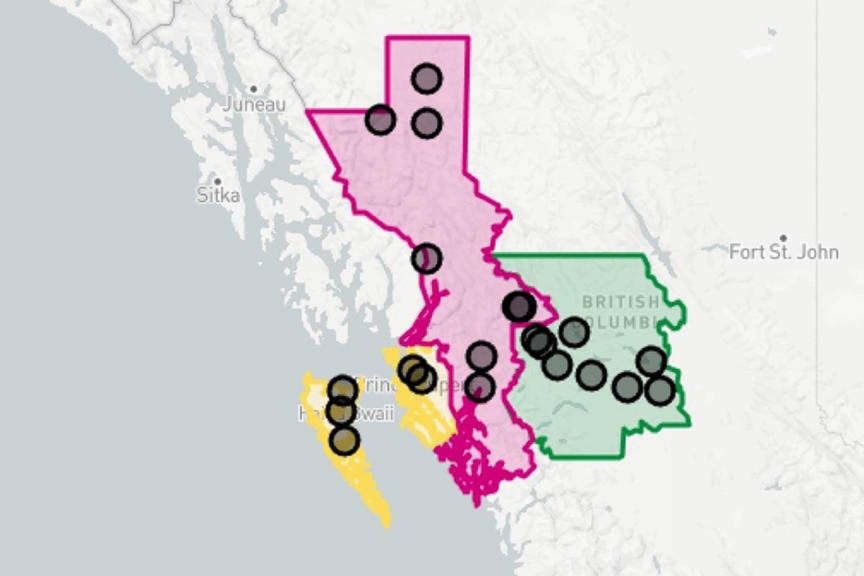The B.C. government has earmarked $250 million in its 2024 budget for the Northwest BC Resource Benefits Alliance (RBA). The funding is set to be distributed over the next five years among its members for the planning and construction of essential municipal infrastructure projects that are critical for supporting new industrial development and creating livable communities for the workforce.
The RBA Steering Committee, comprising Prince Rupert Mayor Herb Pond, Terrace Mayor Sean Bujtas, and Smithers Mayor Gladys Atrill, travelled to Victoria for the formal announcement. While the $250 million is welcome, it falls short of establishing a formal agreement on regular revenue sharing.
Bill Miller, former Regional District of Bulkley-Nechako director of �������� Lake was the chairman of the Resource Benefits Alliance from 2015 to 2018 and worked tirelessly to make sure the local areas received their fair share.
In 2017 Miller said it’s important to educate the provincial government on how much revenue is generated in the northwest and what residents currently see in return.
“They [province] see us as a burden, which doesn’t make sense at all because at the end of the day we’re the ones that are producing the dollars that pay for their highways,” said Miller. “We are revenue generators.”
“The province came through for the Northwest in its budget this week although less than the ask, it is a substantial investment in our communities there were times in the beginning it seemed impossible but the dedication and tenacity of northwest local government officials prevailed,” said Miller.
Formed in 2014, the RBA is a coalition of 18 communities and three regional districts, spanning from Vanderhoof to Haida Gwaii. It aims to secure a fair share of government revenue from future resource developments, aspiring to transform a “have-not region” into one that reaches its full potential. The alliance is predicated on the understanding that small local governments are unable to tax large-scale industries and projects within their areas, as these are typically located outside local government boundaries, but are nonetheless burdened with the financial pressures of providing essential services.
In 2022, the province entered into a memorandum of understanding with the RBA to examine the effects of historic and current industrial development on the infrastructure and livability of member communities. A working group, co-chaired by the RBA and the Ministry of Municipal Affairs and including staff from the Ministry of Finance, found in its September 2023 report that nearly 74 per cent of all major projects related to mining, oil and gas, wood manufacturing, and petrochemical manufacturing recently completed or underway in B.C. are situated within the RBA region. A separate report by the RBA in 2019 identified 222 local government infrastructure projects totaling $1.33 billion, with service costs of $113 million annually over 20 years.
“It is not enough money for [the region] to get our infrastructure deficit on the right side of things, but what this gives us is a foot in the door,” Bujtas said. “It gives us the ability to prove to the government that we can spend this money responsibly on much needed infrastructure inside our communities. And I think it will be a very easy decision for them in five years to not only extend this agreement, but to actually increase it.”
Mayor Pond called this budget announcement a “game-changer” for RBA communities. Mayor Atrill noted the windfall signals continued momentum for the group.
That work began paying off in 2018 when the BC government allocated $300,000 to the RBA for the development of a proposal for a provincial revenue-sharing model. The following year, the province issued the RBA a $100 million grant for infrastructure projects, further cementing the partnership between the government and the RBA. It followed with another $50 million in 2020.
— with files from Rod Link



